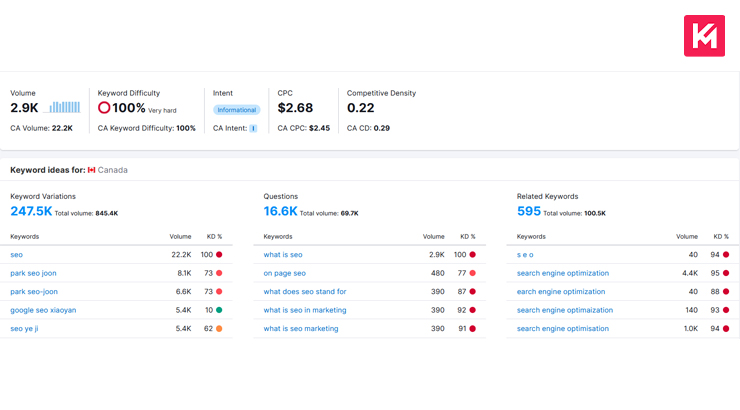Recently, Google rolled out its August 23 Broad Core Update, which, like most core updates, focused on creating relevant and quality content. This has again put focus on the need to create content that satisfies the search intent of the users.
In this blog, we will discuss how you can optimize your content strategy to weather after every Google update with ease.
Let’s begin,
What do you mean by Google updates?
These are a few changes or adjustments that Google makes to its algorithms that determine the search rankings of a website on the SERP. The main goal of these critical updates is to enhance the user experience of your target website visitor with respect to high-quality content.
But you might ask here, why does Google do it periodically?
Well, to tell you the truth, Google rolls out algorithm updates every few months to combat the menace of spammy and irrelevant content. This is done to ensure that users get authentic and relevant answers to their queries. In addition to this, Google tries to adapt to the latest trends and to match the change in users’ search behaviours with each update.
Impact of Google Updates on Websites
Google algorithm updates can have a significant impact on the search ranking of any website. A website that prioritizes the user’s experience with quality and valuable content will see an increase in its ranking on the search engines. Contrary to this, a website that fails to optimize its website as per the latest algorithm update can see a drop in its rankings.

How to prepare your SEO strategy for Google Updates?
Here are some of the points you should take into cognizance when you try to optimize your website as per the latest Google algorithm updates.
1. Stay informed of the latest Google Algorithm Updates:
Google Webmaster Central Blog: The most reliable source you could find to be in touch with the latest Google updates rollout is Google Webmaster Central Blog. It is a web source where you can find the official rollout of Google’s algorithm updates, announcements of new search features and best SEO practices.
Tips:
1.Visit this website “https://developers.google.com/search.”
2.Check regularly to stay updated with Google’s latest updates.
2. SEO news website:
Websites such as Moz, SEMrush and Search Engine Journals can also be used to stay informed about the latest Google updates. As compared to Google Webmaster Central Blog, with these websites, you can gain in-depth analysis, insights and prediction on any specific Google algorithm updates.
3. Evaluating past updates and their effects:
In this step, you should study the impact of past Google updates on your website for valuable insights. Find out which updates had the most significant impact on your website ranking and organic traffic, and learn from those experiences.
4. Setting realistic expectations:
You should understand that Google updates are part of every SEO campaign or work. Set a realistic content strategy, knowing that you have to optimize it as per the latest updates in the future.
How to write content after every Google update?
One of the most prevalent questions of many website owners today is how to write content post-google updates. Read the points below to give the quality and characteristics of your content that Google seeks on websites.
1. Keyword research:
You might probably know that any SEO work starts with proper keyword research. This is done to find out keywords that your target audiences are using to reach the products or services you offer. You can do so with the help of various keyword research tools in the market, such as Ahrefs, SEMrush, Moz, etc.
General Steps for Keyword Research Using SEMrush
- To begin with, sign in to your SEMrush account.
- At the left side of the screen, find the keyword research tool option and click.
- Enter a seed keyword that defines or conveys the idea of your brand and hit enter.
- Semrush will provide you with keyword suggestions and metrics.
- Analyze the relevant keywords and assess their search volume and competitiveness.
- Aim to select keywords that have a higher search volume and less competition.

2. Quality over quantity:
The first thing that you should aim for is to create content that provides in-depth analysis and the opinion of the writer on the topic. This is because when you make it easier for your users to engage with your content, they will be more likely to stay and convert. Also, make sure to write content that satisfies the search intent of your target consumers. Write a piece of content about your products that guides every step of users’ purchase journey.
Moreover, avoid the practice of forced keyword insertion in your content for SEO gains. This is because websites that are indulged in such practices are penalized by demoting them down the search engine result pages.
3. Mobile-friendly content:
In a world where most of the website traffic comes from mobile, can you ignore this aspect of SEO? You cannot, right? A website that is optimized to adjust its layout as per the size of the users’ screen will more likely rank higher on the SERP. Moreover, Google also prioritizes websites that are optimized for mobile usability.
To achieve the mobile usability of your website, you need to subscribe for a responsive design. It is a design that employs techniques such as media queries and fluid grids to automatically adjust as per the screen dimension.
4. User experience and site speed:
The better the user experience your website is able to provide, the greater will be its potential for increased visibility on search engines. Contrary to this a website that loads slowly or has complex navigation will surely lose the interest of the target visitors.
No matter how well you have written your web content, if users are not able to access it naturally, it won’t effectively serve its purpose. So, it becomes critical to have a website that is optimized for loading speed, navigation and overall user satisfaction.
5. Voice optimization:
People have started to use voice search methods to find answers to their queries thanks to the coming of devices such as Alexa or Siri. So, it’s vital to optimize for voice search and ensure users on such devices find your products and services quickly. You should make sure your website’s content includes natural language queries that users naturally use when they make voice searches.
Optimizing your content for E-E-A-T
E-E-A-T signifies the framework of quality content that includes Experience, Expertise, Authoritativeness, and Trustworthiness. Earlier, it was only E-A-T, but it changed after the roll-up of the December 22 core update by Google. When you have content that satisfies the parameter of this framework your content will be more likely to rank higher across search engines. Below are some of the steps that you should consider while writing content after every Google update.
1. Experience:
Quality content often reflects the first-hand experience of the writer on the given topic or niche. Content that is written by a person with years of experience in a particular niche will be more likely to solve the problems of the users. So make sure the content for your website is written by someone with enough experience in the field.
2. Expertise:
You should position yourself as an expert in your niche by publishing well-researched and informative content regularly. Also, the practice of guest posting for third-party websites can boost your credibility and encourage the users to visit your website.
3. Authoritativeness and Trust:
Earn backlinks from reputable websites and encourage user reviews and testimonials. These signals can enhance your website’s authority and trustworthiness.

Monitoring and Adapting
1. Check your website’s performance:
Keep an eye on your website’s performance with the help of tools such as Google Analytics or SEMrush. Monitor the changes in traffic, CTR, and ranking to measure the effectiveness of your content strategy.
2. Analyze SEO metrics:
Pay attention to users’ metrics such as bounce rate, dwell time on web pages, and conversion rates. These metrics provide insights into the ability of your content to meet the users’ expectations.
3. Staying updated with the latest SEO practices:
SEO is an ever-changing field. Don’t you agree? You ought to stay updated with the latest SEO practices to make sure your content remains relevant.
Final Words!!
In the end, it becomes critical to align your content strategy as per the demand of the latest Google algorithm updates. Don’t see these updates by Google as a roadblock but as an opportunity to improve the search ranking of your website further. Make sure the content you write is informative and provides thorough analysis to the users. Inculcate the guidelines of E-E-A-T to the content you write for your website. Finally, update yourself with the latest trends and practices in the SEO world to remain relevant in this competitive world.

